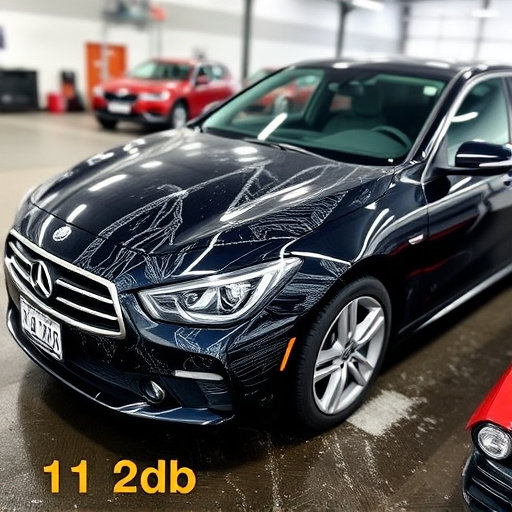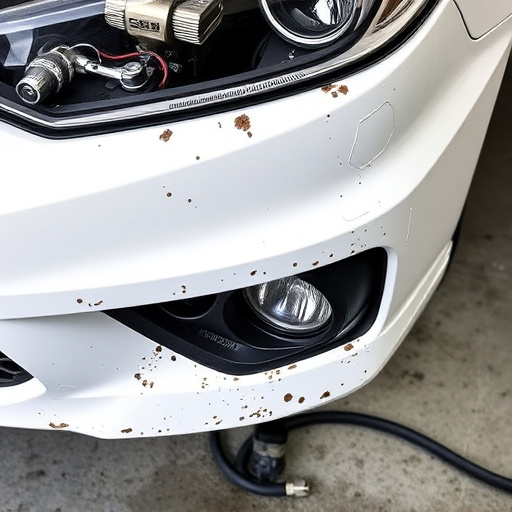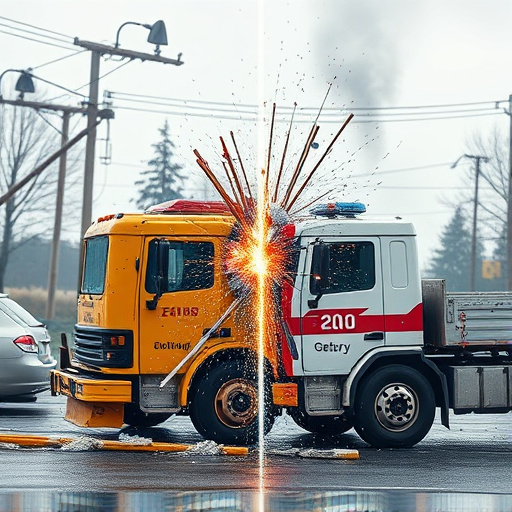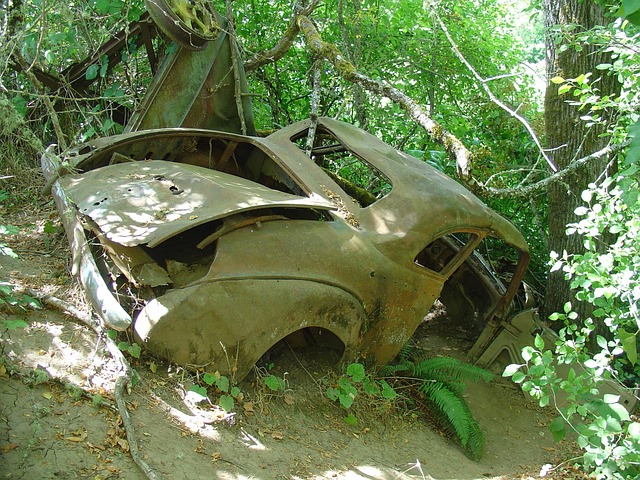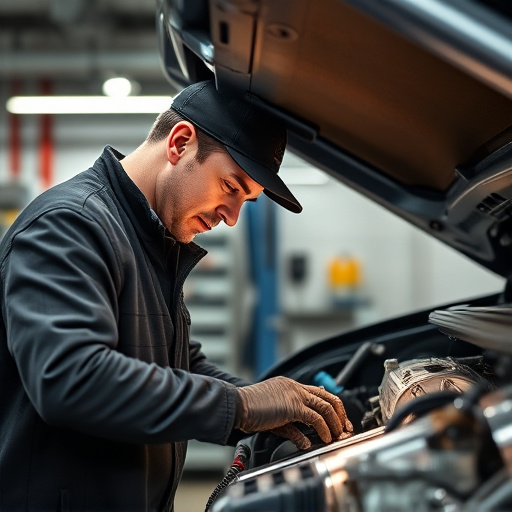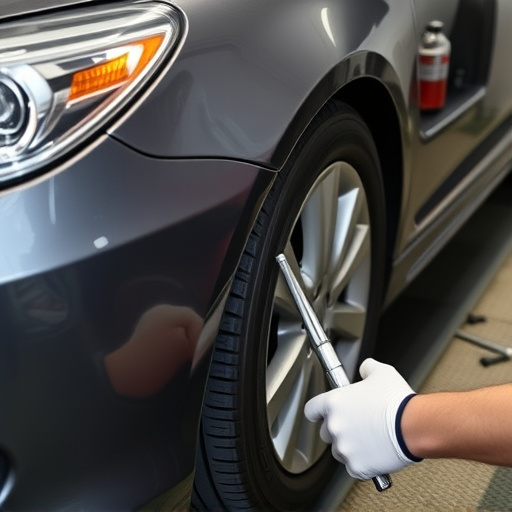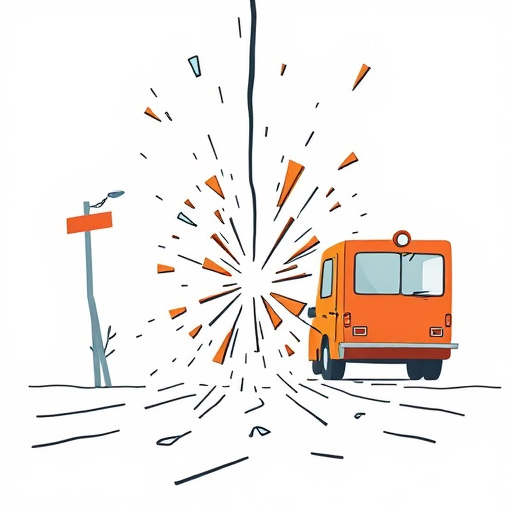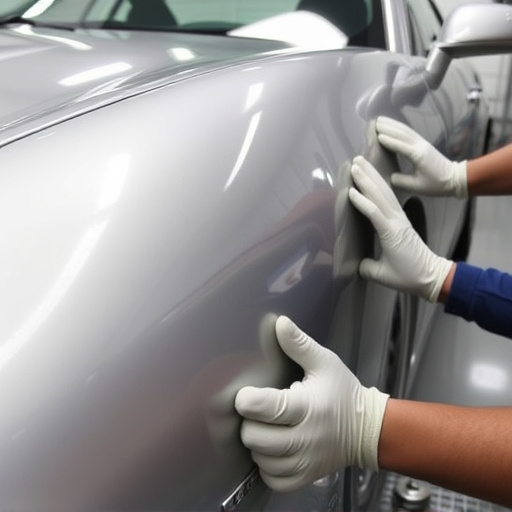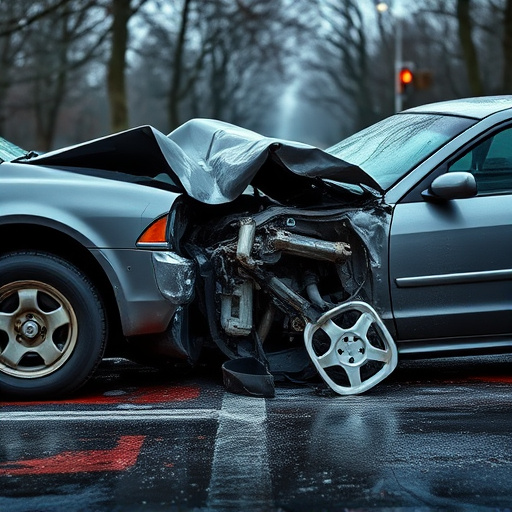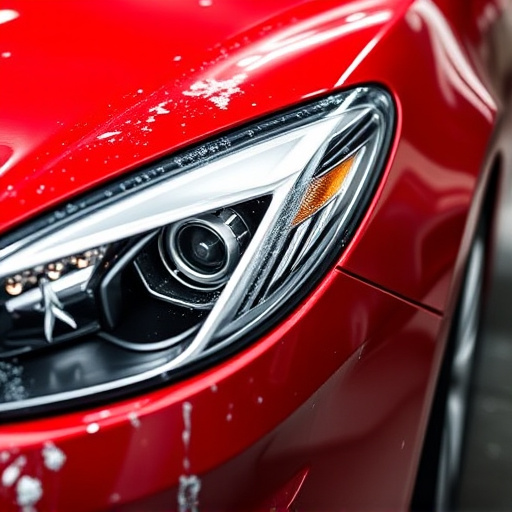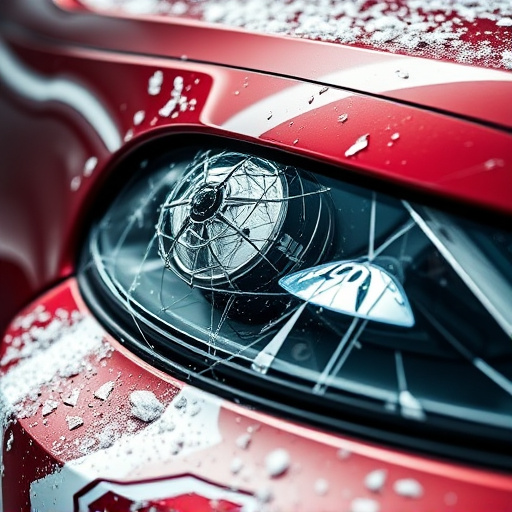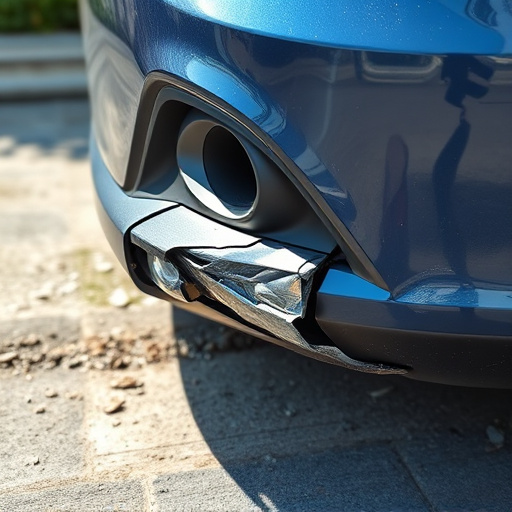After a collision, conduct a thorough brake system inspection for visual damage, fluid leaks, unusual noises, and worn components. Regular checks prevent serious repairs; consult a professional mechanic for comprehensive assessments including component replacement and sensor calibration if needed.
In the aftermath of a collision, ensuring your vehicle’s brake system is safe and operational is paramount. This comprehensive guide walks you through critical steps for post-impact brake safety, including an essential inspection checklist and identifying common signs of damage. By adhering to the outlined safety protocols, you can restore optimal brake performance, enhancing both your peace of mind and roadworthiness after a crash.
- Post-Collision: Initial Brake Inspection Checklist
- Common Brake Damage Signs to Look For
- Safety Protocols After a Crash for Optimal Brake Performance
Post-Collision: Initial Brake Inspection Checklist

After any collision, conducting a thorough brake system inspection is paramount to ensuring safety and preventing future accidents. Here’s a concise checklist to guide your initial post-collision evaluation:
1. Visual Inspection: Examine the brakes for any visible damage or debris trapped within the rotors or pads. Check for signs of warping, bending, or oil leaks that could indicate compromised structural integrity. Also, inspect the brake fluid level and look for any discoloration, which may suggest overheating or contamination.
2. Performance Assessment: Test the braking performance by applying gradual pressure on each wheel. Uneven stopping power, pulsing, or vibration could signal issues with brake pads, calipers, or rotors. Verify that the brakes engage smoothly and effectively, and pay attention to any unusual noises during the test. Don’t forget to check tire integrity as well; torn or bulging tires may require replacement along with auto repair services for wheel alignment adjustments. If concerns persist, consult a professional mechanic for a comprehensive brake system inspection, often part of quality vehicle restoration packages.
Common Brake Damage Signs to Look For
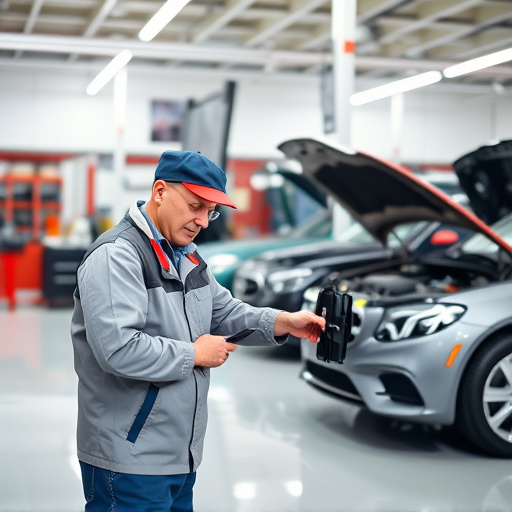
After a collision, it’s crucial to pay close attention to your vehicle’s brake system during an inspection as it plays a vital role in your safety. Common signs of brake damage include unusual noises like screeching or groaning when braking, pulsing or vibration in the pedal, and a noticeable decrease in braking power. Visual cues may include warped or distorted rotors, blurred or glowing brake lights, and oil or fluid leaks near the brakes.
Don’t overlook these indicators, as they suggest issues that require immediate attention from a qualified mechanic. Regular auto maintenance includes checking your brake system, especially after potential impact events like collisions or hail damage repair visits to a collision repair center. Timely detection of problems can prevent more serious and costly repairs down the line.
Safety Protocols After a Crash for Optimal Brake Performance

After a collision, it’s crucial to prioritize safety protocols for optimal brake performance. The first step is conducting a thorough brake system inspection. This involves checking for any visible damage or leaks in the brake lines, calipers, and pads. Even minor dents or cracks can compromise the integrity of the brake system, so meticulous examination is key. During this process, pay close attention to signs of wear and tear, as well as any unusual noises coming from the brakes when applying pressure.
Following the initial inspection, it’s important to consider repairs that go beyond mere fender repair or hail damage repair. The collision might have caused structural changes in the car that affect braking efficiency. Professional mechanics can assess these issues and perform necessary adjustments to ensure the brake system is functioning at its best post-impact. This could involve replacing damaged components, calibrating sensors, or realigning wheels – all crucial steps in maintaining safety and preventing future accidents.
After a collision, a thorough brake system inspection is crucial for ensuring safety and optimal vehicle performance. By following the checklist provided and being vigilant about common signs of damage, drivers can proactively address any issues. Adhering to safety protocols post-crash allows for enhanced braking efficiency and peace of mind on the road. Regular maintenance and prompt attention to potential problems are key to preventing future accidents and keeping both you and your vehicle protected.
